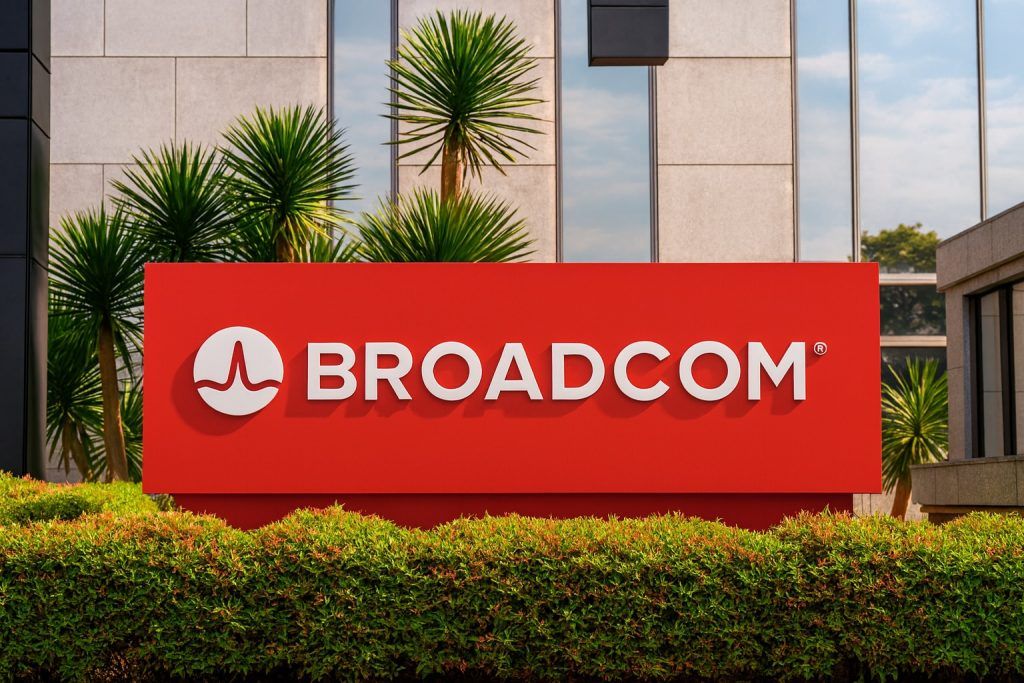Meta Platforms’ stock (NASDAQ: META) is trading in the high‑$580s to low‑$590s on November 19, 2025, extending a sharp pullback as investors juggle a major U.S. antitrust victory, a new privacy investigation in Spain, executive shake‑ups and mounting worries over massive AI spending. MarketBeat+3TechStock²+3Reuters+3
Below is a roundup of today’s key Meta stock headlines and what they may mean for traders and long‑term investors.
Key takeaways for META on November 19, 2025
- Price action: META is hovering around $590, having opened just under $600 and trading roughly between $585 and $595 during Wednesday’s session, after closing at $597.69 on Tuesday. [1]
- Big legal win: A U.S. federal judge rejected the FTC’s effort to force Meta to divest Instagram and WhatsApp, ruling that Meta is not a social‑media monopoly, easing one of the biggest break‑up risks overhanging the stock. [2]
- New EU risk: Spain’s parliament launched a formal investigation into Meta over alleged hidden tracking of Android users, citing potential violations of GDPR and other EU digital laws. [3]
- Leadership changes: Long‑time Chief Revenue Officer John Hegeman is leaving to launch a startup, while Meta reshuffles leadership in Ads, Business Messaging and Business AI. TechStock²+1
- AI spending worries: Meta guided 2025 capex to $70–$72 billion and total expenses to $116–$118 billion, heavily skewed to AI infrastructure—fueling fears of an “AI bubble” and pressuring the stock, which is down roughly 18–21% in the last month and about 25% below its 52‑week high. Yahoo Finance+6TechStock²+6Meta Investor+6
- Analyst moves today:
- Cantor Fitzgerald cut its price target from $830 to $720 but kept an overweight rating (about 20–21% upside from current levels). [4]
- MoffettNathanson lowered its target to $750, warning of margin compression as AI costs surge. [5]
- Street consensus still implies roughly 40%+ upside, with an average 12‑month target around $846 and a Strong Buy consensus from 40+ analysts. [6]
- Long‑term forecasts: A new 24/7 Wall St. model published today pegs META at about $875 in 2025 and above $1,200 by 2030, if revenue and earnings grow as projected. [7]
- Additional headlines: Meta is preparing to shut down Australian teen accounts ahead of that country’s under‑16 social media ban, and has asked the Oversight Board to review its plan to expand “community notes” style moderation globally. [8]
Note: Prices and moves are approximate and can change throughout the trading day.
Meta stock price today: trading near $590 after a bruising month
META came into Wednesday’s session already under pressure after losing roughly 18–21% in under a month from a late‑October level around $750 to just under $600 today. [9]
- Today’s range: Data from multiple market trackers show META opening just below $600 and trading in the mid‑$580s to mid‑$590s so far, with intraday lows near $585 and highs just above $595. [10]
- 52‑week context: Over the past year, Meta has traded between about $480 and $796, putting today’s price roughly a quarter below the high but still well above the lows. [11]
- Valuation snapshot: With a market cap around $1.5 trillion and a trailing P/E ratio in the mid‑20s, Meta now trades at a noticeable discount to some AI peers, even after posting net margins above 30%. [12]
Macro headwinds aren’t helping. Broader tech and AI names have been sliding this week, with the Nasdaq and S&P 500 both under pressure as investors question whether the AI trade has run too far, too fast. [13]
Antitrust win: breakup risk recedes after U.S. judge sides with Meta
One of the most important headlines for Meta this week—still very much in focus today—is its courtroom victory over the U.S. Federal Trade Commission (FTC).
On Tuesday, U.S. District Judge James Boasberg dismissed the FTC’s attempt to unwind Meta’s acquisitions of Instagram and WhatsApp, ruling that the company does not hold a social‑media monopoly. The judge highlighted how competition from platforms like TikTok and YouTube has reshaped the social landscape and undermined the FTC’s case. [14]
Key implications:
- Break‑up threat reduced: The ruling materially lowers the probability that Meta will be forced to break itself up—a major overhang that has weighed on valuation for years.
- Signal for Big Tech: Analysts note that this is one of the first decisive wins for a big tech company in the current U.S. antitrust crackdown, potentially influencing cases against other platforms. [15]
- Not the end of scrutiny: Regulators can still appeal or pursue narrower actions, and Meta continues to face other U.S. and EU probes. But the “forced divestiture” scenario looks less likely than it did a week ago.
Some outlets report that Meta shares initially pared losses on the ruling, with late‑Tuesday trading almost flat versus the broader tech sell‑off—underscoring how important investors view this outcome. [16]
Spain’s privacy probe: a new European headache
If the antitrust win cleared one cloud, Spain just created another.
Today, Spain’s parliament opened an investigation into Meta over alleged covert tracking of Android users’ web activity, following international research that suggested Meta used a hidden mechanism to follow user browsing across websites. [17]
According to Spain’s Prime Minister Pedro Sánchez:
- The probe will examine whether Meta violated several EU privacy and digital‑market laws, including GDPR, the ePrivacy Directive, the Digital Markets Act (DMA) and the Digital Services Act (DSA). [18]
- Meta will be called to testify before a parliamentary committee, and officials have warned that “anyone who violates our rights will face consequences.” [19]
Meta has said it takes privacy seriously and will cooperate with Spanish authorities. [20]
For investors, the risk is less about Spain alone and more about:
- Potential fines and product changes if violations are confirmed.
- The possibility that other EU states or the European Commission could follow Spain’s lead, tightening the compliance screws at a time when Meta is already spending heavily to meet DMA and DSA requirements. [21]
Executive shake‑up: CRO John Hegeman exits and Business AI is reshuffled
Another theme in today’s coverage is leadership change in Meta’s money‑making engine—its ads and business units.
- Chief Revenue Officer John Hegeman, a 17‑year Meta veteran, is leaving to launch a new startup. TechStock²+1
- In a restructuring, Andrew Bocking will now lead Ads & Business Messaging, while long‑time executive Naomi Gleit takes over Business AI, according to reports citing internal memos and Reuters coverage. TechStock²
- Other changes include shifts in the Business AI unit following the departure of executive Clara Shih and a new AI‑integration role for Guy Rosen, reflecting how central AI has become to Meta’s revenue strategy. [22]
Why the shake‑up matters for investors:
- Revenue execution: Ads and messaging drive the majority of Meta’s revenue and profits. Any leadership disruption here naturally makes Wall Street nervous—especially during a period of heavy investment and regulatory risk.
- Scaling AI monetization: The moves are also being read as an attempt to tighten execution on AI‑powered ad tools, business messaging and AI agents, areas Meta is counting on to justify its enormous infrastructure spend. TechStock²+224/7 Wall St.+2
AI spending: the core bull‑vs‑bear battle around META
Nearly every major Meta headline today circles back to one issue: AI spending.
What Meta has told investors
After Q3 earnings, Meta guided:
- 2025 capital expenditures: $70–$72 billion, largely for AI data center build‑out and custom chips.
- Total 2025 expenses: $116–$118 billion, and management has signaled that 2026 spending could rise further as AI workloads grow. TechStock²+1
At the same time, Q3 results were strong:
- Revenue up ~26% year‑over‑year to about $51.2 billion.
- EPS of $7.25, beating analyst estimates.
- Net margin around 31%, with return on equity near 39%. [23]
How markets are reacting
Despite strong fundamentals, Meta’s stock has been punished as investors digest the AI budget:
- Commentaries from analysts and financial media today describe Meta’s AI capex as “a gamble” and “a wave of costs” that could compress margins through 2026. [24]
- Several pieces highlight that Meta is now spending tens of billions per year on AI infrastructure and has started relying more on off‑balance‑sheet arrangements to fund compute, adding to perceived risk. [25]
- Meta has even laid off hundreds of employees in parts of its AI unit as it retools its workforce around more profitable projects, underscoring the scale and complexity of the shift. [26]
Bullish voices argue that:
- Meta’s AI monetization is already visible in stronger engagement, better ad targeting and early business‑AI tools, and that the stock now trades at about 20–21x forward earnings, a multiple some see as reasonable for an AI leader. [27]
Bears counter that:
- Without a full‑fledged cloud or enterprise SaaS business like some competitors, Meta may struggle to earn a sufficient return on that AI spend, leaving margins structurally lower. [28]
This bull‑vs‑bear debate over AI costs is the main reason META is down around a quarter from its peak, despite solid current earnings.
Fresh analyst moves today: cuts, but still a lot of upside implied
Cantor Fitzgerald: target cut to $720, still overweight
In a notable move today, Cantor Fitzgerald lowered its price target on Meta from $830 to $720 while keeping an overweight rating:
- The new target implies roughly 20–21% upside from the high‑$580s to low‑$590s where shares are trading today. [29]
- The firm cited rising cloud and AI infrastructure costs as the main reason for trimming expectations, even as it acknowledged strong profitability and a robust balance sheet. [30]
MoffettNathanson: warning on margins, target to $750
A separate note from MoffettNathanson, highlighted by Finbold, struck a more cautious tone:
- The firm cut its target to $750, warning that Meta is entering a cost cycle unlike previous tech reset periods.
- Analysts there expect margin compression through at least 2026, pointing to Reality Labs losses and heavy AI infrastructure outlays, and arguing that Meta lacks a mature cloud business to offset these expenses. [31]
Street consensus remains broadly bullish
Despite the cuts, Street sentiment is still positive overall:
- Data compiled from multiple sources today show about 40+ analysts rating META a Buy or Strong Buy, with only a handful of Holds and a single Sell. [32]
- The average 12‑month price target sits around $846, implying roughly 40–42% upside from current prices; high targets stretch above $1,100, with the lowest around the mid‑$600s. [33]
In other words, today’s analyst headlines are more about recalibrating expectations than abandoning the stock.
Long‑term forecasts to 2030: what one new model says
A newly published 24/7 Wall St. price‑target model for Meta, dated November 19, lays out an aggressive long‑term path:
- 2025 target: about $875, ~46% above today’s price.
- 2030 target: about $1,216, implying more than 100% upside over the remainder of the decade if the thesis plays out. [34]
The model rests on several assumptions:
- Revenue growth: from roughly $162 billion in 2024 to around $268 billion by 2029, with net income rising from about $55 billion to over $97 billion before a modest pullback. [35]
- Rising EPS: estimates growing from about $21 per share in 2024 to nearly $37 by 2029. [36]
- Free‑cash‑flow focus: the forecast leans heavily on Meta’s track record of boosting free cash flow—roughly doubling from 2019 to 2023—and its ability to maintain discipline even while spending on AI. [37]
These are projections, not guarantees, and assume that:
- AI investments lead to higher monetization in ads, business messaging and new AI services, and
- Regulatory and privacy risks remain manageable rather than becoming existential.
Other notable Meta headlines today
Australia teen ban: Meta prepares to shut down under‑16 accounts
In the regulatory‑policy sphere, Meta made news in Australia:
- As the country’s ban on social media for users under 16 approaches, Meta has started notifying teen users that their Facebook and Instagram accounts will be locked on December 10, with new sign‑ups blocked from December 4. [38]
- Teens will be able to regain access once they turn 16, but verifying age accurately remains a challenge, with privacy and security risks around digital ID checks highlighted in the coverage. [39]
Financially, Australia is a small part of Meta’s global revenue, but the move:
- Signals a growing regulatory push on youth safety,
- Could serve as a template for other governments, and
- Adds to the long list of compliance initiatives Meta must juggle alongside AI investments.
Oversight Board to review global expansion of Community Notes
Separately, the Oversight Board announced today that it will review Meta’s plan to expand its “community notes” style program beyond the U.S. [40]
- Meta wants guidance on how to roll out crowd‑sourced, context‑adding labels on potentially misleading content in countries with differing levels of press freedom, digital literacy and political risk.
- The Board highlights questions around algorithmic consensus, bias, and human rights responsibilities as the program scales globally. [41]
This won’t directly move the stock today, but it underscores how content moderation and misinformation policy remain core to Meta’s long‑term regulatory risk.
Institutional positioning: “smart money” still heavily involved
MarketBeat reported today that AGF Management Ltd. increased its META stake by about 31% in Q2 to more than 918,000 shares, making Meta its second‑largest holding at roughly 3.1% of its portfolio. [42]
Combined with data showing that around 80% of META’s float is held by institutions, it suggests that large investors remain deeply engaged with the name, even as insider sales in November drew attention. [43]
What all this means for Meta stock right now
Putting today’s headlines together, the November 19, 2025 setup for META looks like this:
Positives:
- A major antitrust cloud has lifted in the U.S., lowering the odds of a forced breakup. [44]
- The core ads business is strong, with 20%+ revenue growth and high margins. [45]
- The stock trades around 25% below recent highs and at a more modest earnings multiple than many AI peers. [46]
- Wall Street consensus remains bullish, and some long‑term models still see meaningful upside into 2030. [47]
Risks:
- AI capex is enormous and front‑loaded, with no guarantee that monetization will fully offset higher costs on the timeline investors expect. Forbes+3TechStock²+324/7 Wall St.+3
- Regulatory risk is rising again in Europe, with Spain’s probe potentially opening the door to further EU action on privacy and data use. [48]
- Leadership changes in key revenue units inject some operational uncertainty just as Meta executes its biggest strategic pivot since the metaverse push. TechStock²+1
- Broader markets are in a risk‑off mood toward expensive AI bets, meaning even strong fundamental results may not immediately translate into higher share prices. [49]
For short‑term traders, the $580–$600 area looks like a key psychological zone to watch, with sentiment likely swinging on any fresh headlines out of Brussels, Madrid or Washington, as well as new AI commentary from influential investors and analysts.
For long‑term investors, today’s picture is more about whether you believe:
- Meta can convert its AI spend into sustained revenue and earnings growth, and
- Regulatory and privacy risks, while real, remain manageable rather than existential.
Final word
Meta stock on November 19, 2025 sits at the intersection of huge AI ambition, easing antitrust risk, newly intensified privacy scrutiny and a choppy macro backdrop for tech. The legal victory over the FTC narrows the worst‑case scenario, but Spain’s probe and rising spending have reminded investors that the path from here is anything but smooth.
As always, this article is for information and news purposes only and is not investment advice. Anyone considering META should weigh their own risk tolerance, time horizon, and diversification needs—and, ideally, consult a qualified financial professional before making decisions.
References
1. www.marketbeat.com, 2. www.reuters.com, 3. www.reuters.com, 4. www.marketbeat.com, 5. finbold.com, 6. finbold.com, 7. 247wallst.com, 8. techcrunch.com, 9. www.forbes.com, 10. finance.yahoo.com, 11. www.investing.com, 12. www.marketbeat.com, 13. www.nasdaq.com, 14. www.reuters.com, 15. www.reuters.com, 16. www.reuters.com, 17. www.reuters.com, 18. www.reuters.com, 19. www.reuters.com, 20. www.reuters.com, 21. www.reuters.com, 22. brandequity.economictimes.indiatimes.com, 23. www.marketbeat.com, 24. seekingalpha.com, 25. www.nasdaq.com, 26. finance.yahoo.com, 27. 247wallst.com, 28. finbold.com, 29. www.marketbeat.com, 30. m.investing.com, 31. finbold.com, 32. finbold.com, 33. finbold.com, 34. 247wallst.com, 35. 247wallst.com, 36. 247wallst.com, 37. 247wallst.com, 38. techcrunch.com, 39. techcrunch.com, 40. www.oversightboard.com, 41. www.oversightboard.com, 42. www.marketbeat.com, 43. www.marketbeat.com, 44. www.reuters.com, 45. www.marketbeat.com, 46. www.investing.com, 47. finbold.com, 48. www.reuters.com, 49. www.nasdaq.com







